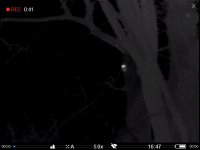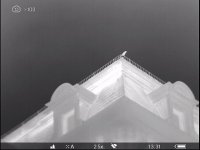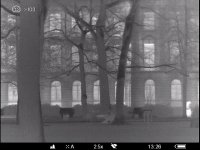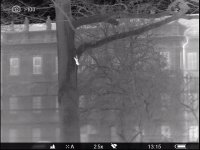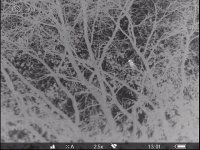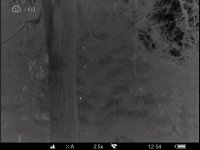@torchepot:
the focus is adjusted manually by turning the focus ring of the lens. The closest distance depends on the lens attached. I just can speak for my device, the XP50 with the 50mm lens. The other models XP28 and XP38 are delivered with 28mm resp. 38mm lenses attached, though the three bodies themselve are all the same.
The shortest focus distance of my XP50 is about 7 meters, closer objects get unsharp. Of course you can see your own hand directly in front of the lens or smallest birds / mammals in the nearest area around.
With the 28mm lens attached the shortest focus distance should be 3m due to the manual (I can't try that as I don't have that lens).
The connection to my iPhone and iPad works great and can be made within seconds, you have to use Pulsar's app (available for iOS and Android) "Stream vision" to manage that. Start WiFi on the Device, login to the "Helion" Hotspot with your phone, start the app and you'll see the imager's viewfinder within seconds. You can remote any function wireless, shoot fotos and videos, change settings and so on. Despite some smaller issues, the app and remote functionality is well done and works with lots of different Pulsar models, both night vision and thermal devices.
As mentioned, I tried my new imager just once so I'm looking forward to day by day experience. But I used it by daylight and in the very pitch dark. The image and detail quality doesn't depend on visible light at all, it only depends on temperature differences.
I didn't experience any of the issues you talked about and during my first session I used the imager for about four hours nonstop, didn't switch it off once. Handheld in the night at about 5°C the battery was at about 50% after 4 hours. The "break" which the device takes from time to time is the auto-calibration of the internal bolometer. The only thing of that calibration you can notice while watching through the viewfinder is, the image is freezing for about 1 second. This procedure is announced at the bottom of the screen, a countdown appears.. 3-2-1- freezing - and that's it. That auto calibration procedure can be switched off and done manually by pressing a button if you think the image quality goes down.
Cheers





